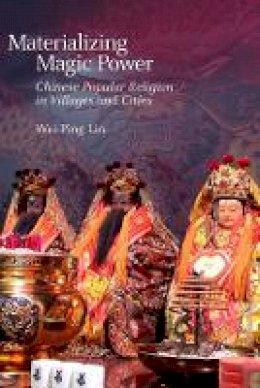
Materializing Magic Power: Chinese Popular Religion in Villages and Cities (Harvard-Yenching Institute Monograph Series)
Wei-Ping Lin
Materializing Magic Power paints a broad picture of the dynamics of popular religion in Taiwan. The first book to explore contemporary Chinese popular religion from its cultural, social, and material perspectives, it analyzes these aspects of religious practice in a unified framework and traces their transformation as adherents move from villages to cities.
In this groundbreaking study, Wei-Ping Lin offers a fresh perspective on the divine power of Chinese deities as revealed in two important material forms—god statues and spirit mediums. By examining the significance of these religious manifestations, Lin identifies personification and localization as the crucial cultural mechanisms that bestow efficacy on deity statues and spirit mediums. She further traces the social consequences of materialization and demonstrates how the different natures of materials mediate distinct kinds of divine power.
The first part of the book provides a detailed account of popular religion in villages. This is followed by a discussion of how rural migrant workers cope with challenges in urban environments by inviting branch statues of village deities to the city, establishing an urban shrine, and selecting a new spirit medium. These practices show how traditional village religion is being reconfigured in cities today.
Product Details
About Wei-Ping Lin
Reviews for Materializing Magic Power: Chinese Popular Religion in Villages and Cities (Harvard-Yenching Institute Monograph Series)
D. J. Hatfield, Berklee College of Music Materializing Magic Power is a significant contribution to the anthropology of religion and to the study of religion in China. We have quite a few studies of rural religion in Taiwan (although this is particularly well done in Lin’s case), but almost nothing for any Chinese society that brings this level of ethnographic context to migrant religion. It is by far the best study of this kind that I have seen for any Chinese community, even though we have known how important migration has been.
Robert P. Weller, Boston University
